Premium Only Content
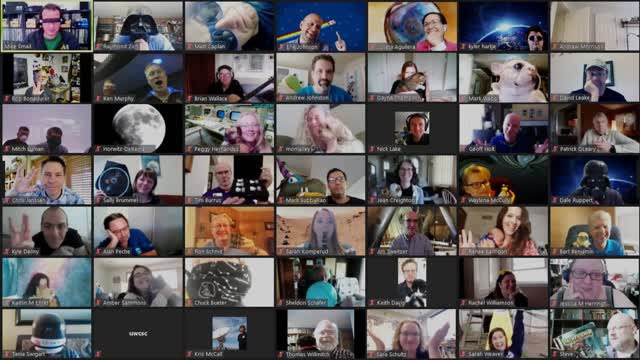
WIMPS 5-2020 (virtual conference)
8:45-9:00 Pre-meeting Open Chat
Mix and mingle in an open forum/fashion, before we dive into the day’s formal presentations.
9:00-9:15 Welcome/introductions
Mike Smail, Andrew Johnston – Adler Planetarium
9:20-9:35 Is Viral Media an Effective Way to Teach the Public?
Matt Caplan – Illinois State University Planetarium
Yes. Despite collective attention spans shortening, news cycles quickening, and an exponentially growing amount of information competing for an audience, viral media is an effective tool for increasing public awareness of science. I will discuss some personal experience with both traditional journalism and YouTube and quantitatively show that public outreach does effectively improve the public's knowledge of science despite exponentially decaying interest following viral transients. Understanding the public attention span, especially toward science journalism, can help us optimize our outreach activities during viral media cycles to maximize reach and impact.
9:40-9:55 Interactive Water Resources Programs for Planetariums in Minnesota
Sally Brummel – Whitney and Elizabeth MacMillan Planetarium, Bell Museum
Minnesota Water Stories is a program in development by the Bell Museum and planetariums around the state that presents water issues from a cosmic, global, statewide, and local perspective.
10:00-10:10 Adler’s Space Visualization Group
Mark SubbaRao – Adler Planetarium
10:15-10:25 Telescope Check-out
Brian Wallace – Forestview Planetarium
I started a telescope check-out program in our middle school this year. It was modeled after the program Geoff Holt started a few years ago. I will simply explain how I got it started and some of the positive and negative takeaways after it being in place for a few months. I will also gladly accept feedback to improve the program.
10:30-10:35 Five Minute Break!
10:40-10:55 Testing Online Live Programming
Jean Creighton – Manfred Olson Planetarium
Lessons learned from the experience of presenting a series of live online astronomy programs with a live Q&A in collaboration with the Alumni Association at my university.
11:00-11:10 Zero to 60 Million Light Years in 60 Seconds: The Power of Smart Telescopes for Real-Time Deep Space Experiences
Jim Sweitzer – Science Communications Consultants
Telescopes used in educational programs traditionally face two serious limits: first, at most observing sites, only the Moon, Jupiter or Saturn are reliably exciting in an eyepiece. Second, if digital cameras are mounted on traditional Schmidt-Cassegrain telescopes, the equipment is complex and cumbersome, requiring an expert to use effectively. Small, smart telescopes, however, like Stellina and eVscope, eliminate those restrictions and rapidly image deep space objects even under light-polluted skies. Within minutes, they reveal structure in galaxies and are sensitive enough to observe faint comets, asteroids and exoplanet transits. Smart telescopes could represent a “see change” similar to that initiated by full-dome digital technologies. No longer confined to the Solar System, we can now time travel with audiences into deep intergalactic space. This paper will explore the exciting challenges we will face as interpreters of these newly captured realms of observation.
11:15-11:25 Science, Art, and Wonder: Time-Traveling Around the World with the Adler's Collections
Pedro Raposo – Adler Planetarium
An overview of the Adler's world-class collections of historical scientific instruments, rare books, and archival materials with an emphasis on digital tools to explore the collections remotely.
11:30-11:45 Introduction of Active Learning Methods to a Traditionally Taught Astronomy Course
Raymond Zich – Illinois State University Planetarium
We report on the introduction of active learning elements into a traditional lecture-based general education sophomore level astronomy course and the results of that instructional modification. The course was transitioned into an active learning environment through the addition of concept-oriented worksheets, hands-on experimental activities, planetarium-based lessons, and observing sessions. Group work was emphasized in the conversion process. We reflect on the process of this transition and report on factors that led to the adoption of active learning, factors that supported the change, and barriers faced while implementing this change. We compare and contrast these findings with other case studies of instructional change and theories of adoption. In addition, student learning pre to post was measured with the TOAST and LPCI, and qualitative data was collected in the form of 35-minute semi-structured interviews with each student to investigate student learning, attitudes, and perceptions of the course as a whole.
11:50-12:50 LUNCH
Self-service, in your kitchen.
12:55-1:05 Lunar Caravan
Julieta Aguilera – IMERSA
Connecting aesthetic and scientific observations of the sky around the planet.
1:10-1:20 #YourUniverse Virtual Series at Ball State
Dayna Thompson, Rachel Williamson – Charles W. Brown Planetarium
Through #YourUniverse, we are working to connect with our community at a distance w/ an online series that includes talks, activities, trivia, and more.
1:25-1:55 Studying the Presence of Formative Assessment in Live Planetarium Presentations
Sara Schultz – Minnesota State University Moorhead Planetarium
I will be reporting on the findings from my doctoral research on presence of formative assessment teaching strategies, or lack thereof, in planetarium presentations and what this could mean for professional development opportunities in this area.
2:00-2:15 Maintaining a Building’s Capacity
Steve Burkland – Adler Planetarium
Even during a time of reduced capacity, there's a difference between the number of guests your institution can see in a day, and how many it's allowed to see at any given moment. Maintaining the correct moment-to-moment capacity requires clear lines of communication among front-line staff, an understanding of what to do when the capacity is reached, and a means of knowing when more guests are allowed to enter. We created a web-based application that allows our security staff to monitor and modify the count of people in the building as they enter and leave, and allows our management staff to be aware of the real-time or historic attendance for the day.
2:20-2:30 Cosmic Changes at the Soref Planetarium
Bob Bonadurer – Milwaukee Public Museum
A brief update on educational changes here in downtown Milwaukee.
2:35-3:00 Step One: Open a 16-Ounce Beverage Can
Chuck Bueter – Michiana Astronomical Society
To get the public to embrace solar energy as part of the nation's renewable energy mix, planetariums can guide people to be more familiar with and informed about the sun. In this activity we make a solargraph to show the long-duration path of the sun arcing across the sky. In advance, gather if possible a few 16-ounce aluminum cans, a can opener, a pin, duct tape, electrical tape, and a piece of 5x7 paper (after coronavirus restrictions are lifted you'll replace the paper with black and white photographic paper).
-
 1:56:56
1:56:56
MattMorseTV
3 hours ago $1.66 earned🔴Trump's MASSIVE Press Briefing UPDATE.🔴
2.43K24 -

Right Side Broadcasting Network
1 hour agoLIVE: Make America Healthy Again Commission Meeting - 9/9/25
2.39K1 -
 1:57:40
1:57:40
The Charlie Kirk Show
3 hours agoWhere Do Rights Come From? + Lions and Scavengers + Midway Blitz | Shapiro, Yoo, McLaughlin | 9.9.25
30K13 -
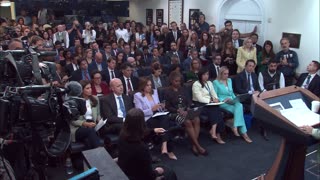 1:19:45
1:19:45
The White House
6 hours agoPress Secretary Karoline Leavitt Briefs Members of the Media, Sep. 9, 2025
14.4K15 -
 1:24:12
1:24:12
Mark Kaye
3 hours ago🔴 ICE Invades Chicago- Operation Midway Blitz
7.13K1 -
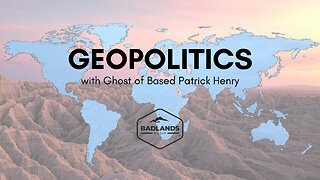 LIVE
LIVE
Badlands Media
12 hours agoGeopolitics with Ghost Ep. 37- Sept. 9, 2025
958 watching -
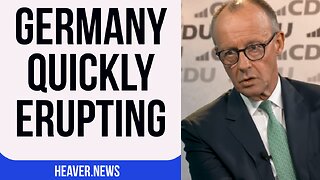 4:07
4:07
Michael Heaver
3 hours agoBattered Germany Quickly Erupting Into PANIC
3.89K5 -
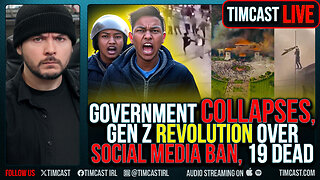 1:05:32
1:05:32
Timcast
3 hours agoNepal's Government COLLAPSES, Gen Z REVOLUTION Over Social Media Ban, 19 Dead
96.3K85 -
 2:06:23
2:06:23
Steven Crowder
6 hours agoBrian Stelter's Delusional Response to the Charlotte Stabbing is Everything Wrong With Media
267K257 -
 1:23:34
1:23:34
The Mel K Show
3 hours agoMORNINGS WITH MEL K - Suicidal Empathy, Denial of Truth & Rewriting History as a Weapon 9-9-25
17K5